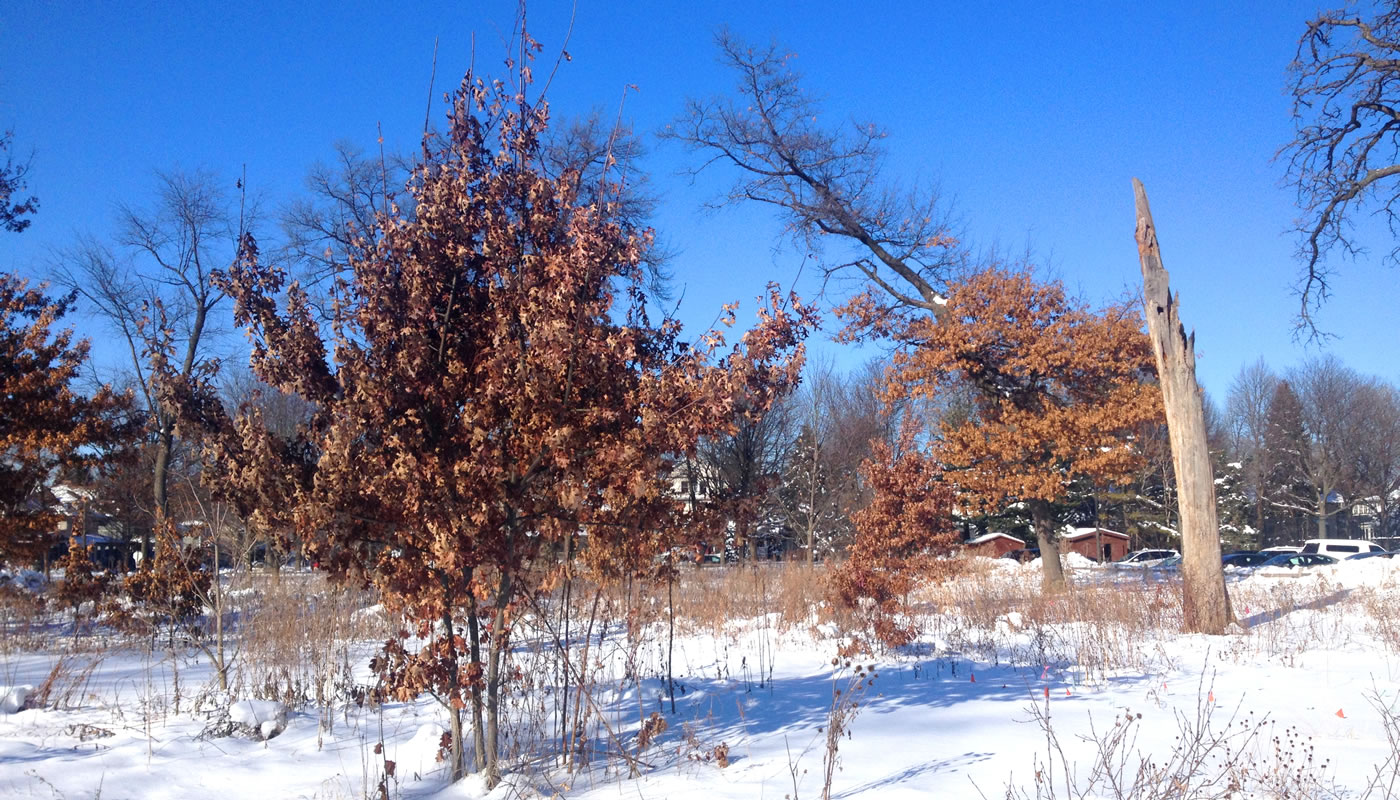Each autumn, the leaves of trees throughout the Forest Preserves transition from shades of green to a tapestry of bold oranges, reds and yellows. But as quickly as the leaves change color, they tumble to the ground, creating a landscape of bare trees.
But a few local trees do things differently, keeping their dead leaves through the winter, a phenomenon called marcescence. If you look closely during the winter months, you will notice marcescent leaves on several oak species in the preserves (or your neighborhood). Younger oaks may keep what looks like a full complement of dead brown leaves, while more mature oaks may keep them on just their lower branches. Even if you don’t see them, you can often hear their eerie rattling when a cold wind blows.
Leaves fall from most deciduous trees when chemical changes weaken the connection between the leaf and the tree. Normal cues for these changes include shortening daylight or environmental stress, such as disease. Marcescence occurs when this process is interrupted.
While no one really knows why these oaks (and a few other local trees) keep their leaves through winter, theories abound, including early frost and evolutionary adaptation to wildfires.
One theory is that the presence of dead leaves make the trees less appealing to deer or other browsers, essentially acting as a defense. Still others point to either high exposure to sunlight or the lack of it as possible causes for these leaves hanging on longer. According to Andrew Hipp at The Morton Arboretum, a Seneca legend claims oaks hold their dead leaves in defiance of winter.
One thing we do know—when spring arrives, these leaves will be replaced by the green variety.
Further reading:
- When Oak Leaves Fail to Fall (PDF) – The Morton Arboretum
- Winter Leaves That Hang On – Penn State University Extension

